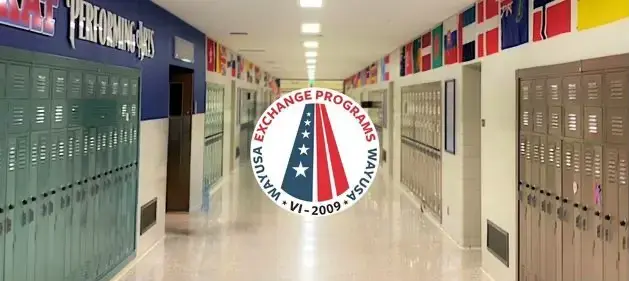Spending a semester or an academic year at an American high school sounds like a dream — and thanks to the J-1 visa, it’s an achievable one. But this visa is much more than just a stamp in a passport. It’s an official invitation to be part of a cultural and educational adventure, recognized at the highest level. Let’s explore what the J-1 visa is, how it came to be, how it differs from the F-1 visa, and why being granted a J-1 is both prestigious and more accessible for high school students.
The Origins of the J-1 Visa: Diplomacy, Exchange, and Mutual Understanding
The J-1 visa was created in the aftermath of World War II as part of the U.S. government’s efforts to promote international understanding through cultural and educational exchange. In 1961, Congress passed the Mutual Educational and Cultural Exchange Act — also known as the Fulbright–Hays Act. This law laid the foundation for the J-1 visa, which supports temporary educational and cultural experiences in the United States.
Today, the J-1 visa allows students, interns, teachers, researchers, and — most importantly for us — high school exchange participants to live and study in the U.S. under the sponsorship of designated organizations that are approved and monitored by the U.S. Department of State.
Today, the J-1 visa allows students, interns, teachers, researchers, and — most importantly for us — high school exchange participants to live and study in the U.S. under the sponsorship of designated organizations that are approved and monitored by the U.S. Department of State.
J-1 vs. F-1: What’s the Difference?
Though both J-1 and F-1 are student visas, they are designed for different purposes:
Why Receiving a J-1 Visa Is Prestigious
Selective and Trust-Based
The J-1 visa is not handed out automatically. Students must go through an official selection process, which includes English testing, interviews, application forms, and personal essays. This ensures that only motivated and mature students are invited to represent their culture abroad.
Government Recognition
J-1 programs are regulated and approved by the U.S. Department of State. That means this experience is not just cultural — it’s officially recognized. Students who receive the visa are considered young cultural ambassadors.
Impressive on Future Applications
A successful year in a U.S. school on a J-1 visa can strengthen future college and scholarship applications. It shows adaptability, intercultural communication skills, and academic competence in an English-speaking environment — all of which stand out on a résumé.
The J-1 visa is not handed out automatically. Students must go through an official selection process, which includes English testing, interviews, application forms, and personal essays. This ensures that only motivated and mature students are invited to represent their culture abroad.
Government Recognition
J-1 programs are regulated and approved by the U.S. Department of State. That means this experience is not just cultural — it’s officially recognized. Students who receive the visa are considered young cultural ambassadors.
Impressive on Future Applications
A successful year in a U.S. school on a J-1 visa can strengthen future college and scholarship applications. It shows adaptability, intercultural communication skills, and academic competence in an English-speaking environment — all of which stand out on a résumé.
Why the J-1 Visa Can Be Easier to Get than the F-1
At first glance, you might assume a government-regulated visa would be harder to get. In fact, the J-1 visa is often more accessible for high school students, and here’s why:
- You don’t need to pay school tuition or housing fees — the program is designed to match you with a volunteer host family and place you in a public school.
- You don’t need to show large personal funds — unlike the F-1 visa, where students must prove they can pay for private school tuition and living costs.
- You are supported by a sponsor organization — these organizations guide you through every step, from choosing a school to preparing for the interview at the embassy.
Final Thoughts: A J-1 Visa Means Growth, Experience, and Recognition
- For students, the J-1 visa means more than just studying in the U.S. — it’s about becoming more independent, exploring new perspectives, building lifelong friendships, and stepping into adulthood with confidence.
- For parents, it’s a sign of trust and safety. The program is backed by the U.S. government, carefully monitored, and relies on experienced coordinators and host families.
Earning a J-1 visa is an accomplishment in itself. It shows that a student is ready for new challenges and can take responsibility. And that’s already a powerful step toward a successful future.
Apply for your J-1 visa through the Exchange Program — and take that step today!

